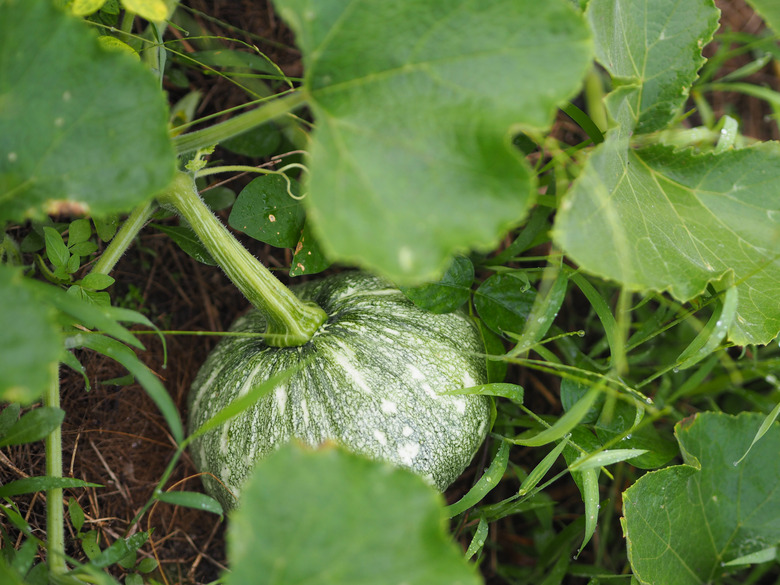How To Grow Kalabasa Philippine Squash
We may receive a commission on purchases made from links.
Kalabasa squash is a type of winter squash that is popular in the Philippines. The word "kalabasa" means squash or pumpkin in English, and this squash does look very much like a pumpkin. All winter squash have the same general cultural requirements, including lots of sun, well-drained soil, and plenty of elbow room to grow.
Meet the Kalabasa Squash
Meet the Kalabasa Squash
Kalabasa squash (Cucurbita maxima Duchesne) has many different names around the world. This is the name used in the Philippines, where the squash is widely grown as an edible vegetable. In English, the squash is called a pumpkin or a great pumpkin.
Kalabasa is an annual herbaceous vine. The reason it needs lots of space to grow is the fact that the vine can grow to 12 feet long or more. The rounded leaves have five shallow lobes lined with tiny teeth, while the erect yellow flowers are shaped like bells. The kalabasa fruit is fleshy and large, usually with dark green skin when mature. The squash is often oval but can be found in other shapes. All have yellow pulp.
Plant Kalabasa Squash
Plant Kalabasa Squash
Kalabasa squash grows from oval seeds that are found inside the pumpkins. If you want to grow more of these vegetables, understand that all squash are warm-season crops that need lots of sun and warm soil.
Choose a very sunny site, prepare the soil, and direct seed in warm soil in springtime. The soil should be at least 60 degrees Fahrenheit before planting, and the last spring frost should be well in the past. In addition to being well draining, the soil should be rich in organic matter to allow it to hold moisture. The pH should be between 6.5 and 7.5.
Sow one or two seeds about 1 inch deep and some 4 to 5 feet apart. If you are planting more than one row, leave at least 6 feet between rows. The seeds must be in lightly moist soil in order to germinate. Sprinkle with water regularly but don't overwater. Apply several inches of organic mulch, like straw, around the plant to help keep in moisture and prevent weeds from growing.
Grow Kalabasa Squash
Grow Kalabasa Squash
Squash plants need water every week. Drip irrigation is the best choice, but if that is not possible, water them deeply every week. If you don't water deeply, the vines will develop shallow roots that may not be able to support the fruit.
Don't forget how long these vines will grow. Winter squash vines sprawl all over the beds and need space to do so. Alternatively, you can train them to grow up a trellis. Kalabasa squash, like other winter squash varieties, have both male and female flowers. Pollinators, like bees, transfer pollen from male to female flowers.
Harvest kalabasa squash when the green exterior rind is hard. If you can pierce it with a fingernail, it still needs more time. The skin of mature squash is dull and dry.
